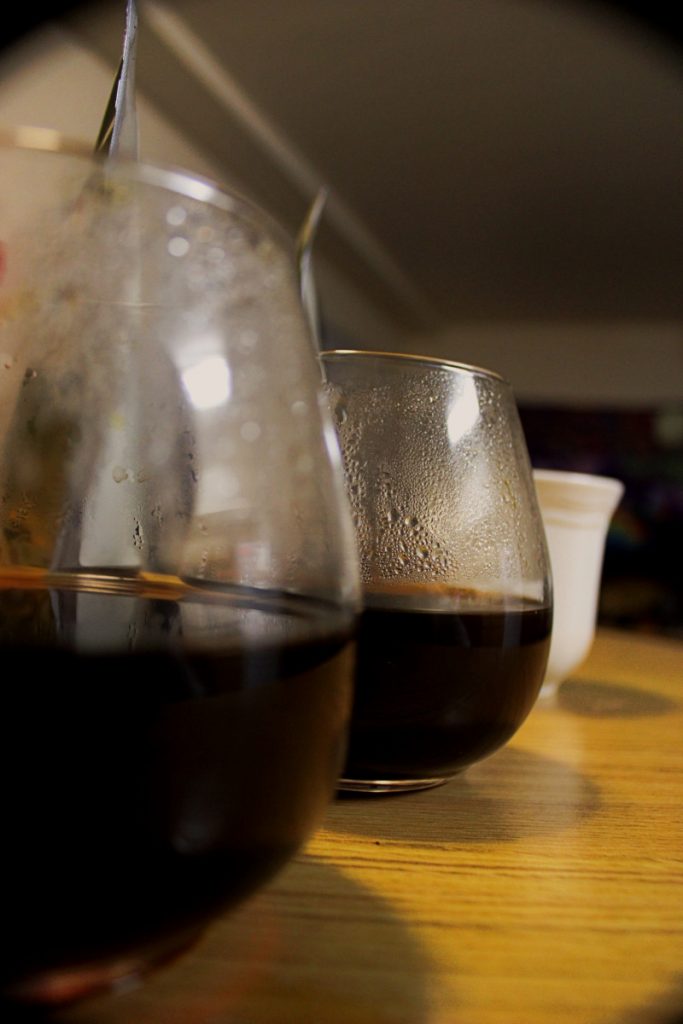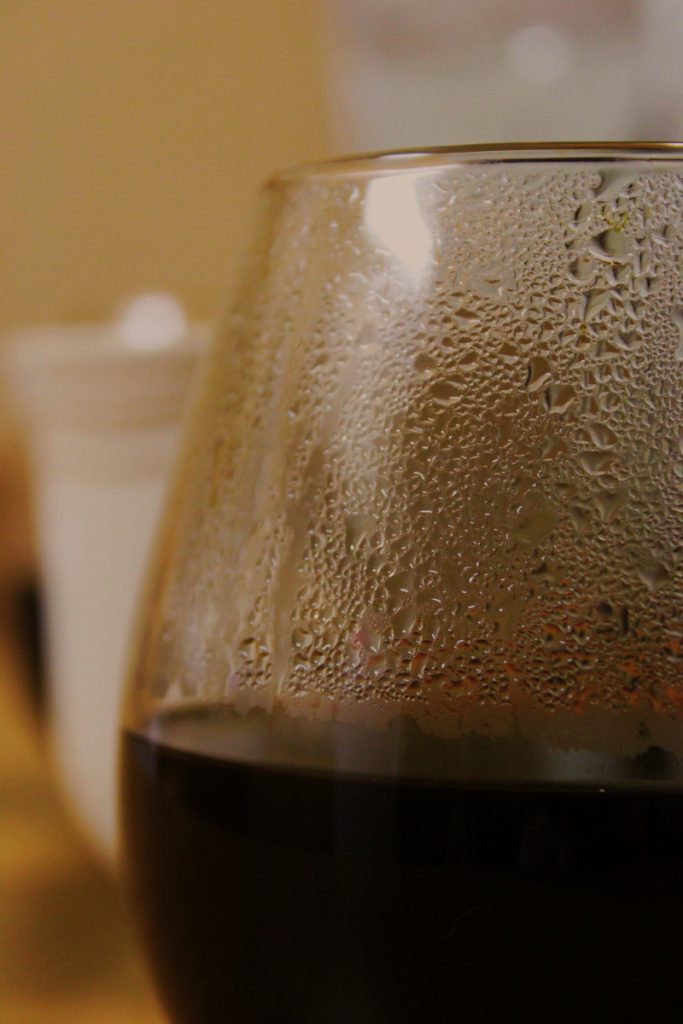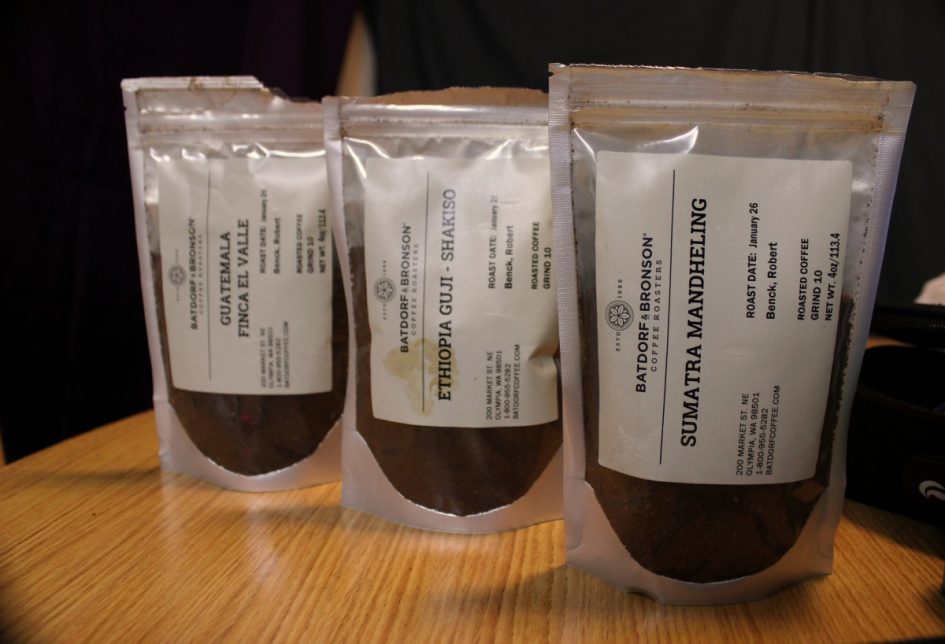
Photo by Nakiah
#3a: Film Series: Program Questions in Scenes and Overview
I’ve chosen min 1:40- 5 min from Monk of Mokha, which I’m titling “ from war to cup” in order to explore program question “Where and how do people raise the food we are highlighting?”. I would like to call my fellow classmates’ attention to the farmers harvesting the crops the narrator talks about the varieties and how the soil matters and we need to give credit to it in order to uplift the farmers especially in areas such as Yemen. Another thing I would like to call attention to Mukhtar and how he talks about Yemen and how its not as it seems on the tv. Even though there are negative things Yemen had the first port for coffee. It also shows the hard work and dedication the farmers are making in order to produce the coffee. Mukhtar also discusses his journey in Yemen and how It shaped him and his coffee business. This scene compelled what I learned about where and how people raise the coffee we are highlighting by showing the reality of the coffee producers in Yemen and how they are struggling to survive this such as war, poverty, and hunger while trying to make ends meat for their families by selling coffee internationally. The war in Yemen has been going on for over 3 years and doing my own research about how the war is affecting coffee producers in Yemen I found an article that discusses how the producers cant benefit from the international prices so it makes it difficult to import basic products in order to grow the coffee. Pretty interesting read.
https://perfectdailygrind.com/2017/03/how-is-the-yemeni-civil-war-affecting-coffee-producers/
The film I chose for this week was Olympia coffee video 3 minutes (1-5) to explore why matters of taste both objective and subjective are based on your experience of what you think, feel, sense, and believe? I’m titling this scene “coffee coffee coffee”. As the scene opens the man talking discusses the care and attention that goes into the coffee in order for them to tell their story and really explain to the customers and make them feel welcome in the coffee store. As it moves to the middle of the scene it talks about the level of quality going into them getting rare coffee beans and how the increasing demand of coffee is creating dynamic flavor experiences for the taster and goes on to talk about how the coffee, we have today is more delicious than ever. When we get to the last scene it’s about the process of making coffee at Olympia coffee and you can tell throughout the few minutes that they take the way they want the customers to experience the coffee very differently than how other places do it. It’s a more emotional connection with the place and the coffee they serve. This scene really compelled my learning about the way an experience and learning about the coffee, where it comes from, and how it gets to your cup either in the early mornings to wake up or late at night when you’re trying to get some class work done at 4 am in order for my audience to learn about why matters of taste are based on your experience and how you feel and what you believe because for some coffee is not only a cup of jo but it’s an experience when being more emotionally connected to what you’re tasting
Wk 5: Coffee
- ‘Monk of Mokha’ tells the story of your culture-crossing, life-changing cup of coffee, PBS New Hour (6 min)
- Black Coffee, Point of Origin podcast #28 (Stephen Satterfield, 40 min) plus browse related links at this website while listening to the Black Coffee podcast
- Black Gold. Website with reviews and film on campus library streaming service Kanopy. (Directors Marc and Nick Francis, 2006, 77 min).
Wk 6: Coffee
- Olympia Coffee (website to browse with assorted short videos, 30 min)
- Black Coffee Northwest (website plus google for related news items)
- Love, Coffee, Yemen: A Story of Hope, fueled by coffee by Mokhtar Alkhanshali | Nuqat 2019 (36 min)
- Top 8 Coffee Documentaries to Watch Online for Free (8 min)
- Recommended: Delicious Peace Grows in a Ugandan Coffee Bean (2010, 40 min)
#3b: (un)Natural Histories
- Knowing the genetic origin of coffee varieties andcultivars within these two species is important to understand the main differ-ences and similarities in their chemical composition and flavour
- The coffee tree is part of the sub-kingdom of plants known scientifically as the Angiosperm, or Angiospermae, meaning that the plant reproduces by seeds enclosed in a box-like compartment, the ovary, at the base of the flower.
- in madagascar, 67% of the species grow only in humid evergreen forests, 17% grow only in seasonally dry forests and the remaining species grow in both types of forests
- The time from flowering to the completion of fruit maturation varies greatly between species and is dependent on factors such as genotype, climate and cultivation practices.
- The root system plays several key roles for the plant. Though often overlooked, it serves the basic function of fixing the plant in the soil or substrate.
#3c: Regenerative Agriculture
- Just as there are two main kinds of coffee, Arabica and Robusta, there are two main methods of coffee cultivation, sun- grown and shade-grown. Shade grown coffee is the more traditional approach that mimics the natural way coffee used to grow, underneath a forest canopy.
- In Guatemala, coffee is traditionally shade grown, so it has not been a major cause for deforestation in the country. However, in all of Central America, sun cultivation of coffee has led to a 2.5 million acre loss of forest. With coffee being the second most traded commodity in the world, the ways in which coffee is cultivated do matter.
- Biodiversity encompasses many interconnected functions of an ecosystem. An example of one natural process is how different microbes in the soil break down organic matter and cycle nutrients back to the plants. Another function resulting from biodiversity is that growing different varieties of crops together increases their resistance levels to pests and diseases. The diversity of wildlife in the environment can positively impact the coffee. For example, having more diversity of trees can increase bird population in the surrounding areas. A variety of fruit trees, and trees with epiphytes (plants that grow on trees and feed on air) create more habitat for a greater diversity of bird species. Birds aid the growth of coffee by serving as natural predators for coffee pests. Another effect of greater tree diversity is an increase in pollinating insects. While arabica coffee is a self-pollinating plant, the presence of pollinating insects like bees has been shown to increase production of coffee cherries.
#3d: Case Study Tasting Research: Coffee



#3e: Stuckey’s Taste Book Experiments
- What snacks did you choose to bring to the experiments and why?
- Belvita snacks
- Raisins
- Parmesan chips
- What beverages did you bring to the experiments and why?
- Water
- Almond milk
- Vanilla Comoro tea
- What is your favorite snack food? From your own perspective, what is the story of how your favorite snack made it to your hands?
- My favorite snack food is probably mac and cheese. My roommates and I make mac and cheese at around 3 am a lot and usually watch a movie. Its the first thing we all ate together.
1st Experiment Questions:
- Please reflect on your experience through this experiment; did you notice any difference in how your mind prepared and received a drink of a strange color? Why do you think that you experienced it this way?
- Yeah, the red tuned the milk pink and definitely made me think about strawberry milk and I was expecting it to be sweet.
- The green in my water had me thinking maybe it was going to be apple flavored or something.
- And I had blue left from the lab before this so I used it instead of the yellow and I thought it was my blueberry tea I drink everyday
- Why do you think some farmers grow different colors of the same vegetable?
- Variety, different colors catch the eye of consumers
- Do you have an example from your own life where the appearance of a food affected your decision of whether or not to buy it?
- Yes, as a kid I hated pork chops and I associated the color with every kind of meat being pork chops so I didn’t eat fried chicken for years
- If you were to cook and eat an entire meal while being blindfolded for the whole experience, what meal would you choose? Why?
- Avocado toast because its simple and really good.
2nd Experiment Questions:
- Please reflect on your experience through this experiment; did you find it difficult to guess the snacks purely on the sound they make when being chewed?
- Yes, I hate hearing people chew
- Is there a certain food that you particularly enjoy the sound of (eating, cooking, drying, boiling, etc.)?
- The sound of sauteing mushrooms and onions
Bonus Question:
- If you had to choose one of your five senses (sight, smell, hearing, tasting, or touch) to give up every time you ate a meal, which would you choose? Why?
- Hearing, I think it would make me focus on the taste of the food more
#3f: Sustainable Entrepreneurship
- Pests, diseases, and fungi are an everpresent coffee production challenge. Coffee leaf rust (la roya) is a famous disease that’s affected coffee crops for over a century. In 2012, it hit Central America hard. And over the next two years, it caused over $1 billion in damage
- Currently, climate change is leading to rising temperatures and new rainfall patterns – something that’s placing the Arabica coffee species under threat. There are four main species: Arabica, Robusta, Excelsa, and Liberica. Arabica is widely considered to be the best quality, thanks to its aromatic flavours, and so it attracts higher prices. It also accounts for roughly twice as much of the international coffee market
- In most places, coffee picking is seasonal and sometimes even nomadic work. The pickers are paid based on the weight of the cherries they collect, and they need to work 8 hours a day on steep hillsides for their pay. Then, at the end of the harvest, they have to find other jobs or move to other regions. It’s easy to see why people might choose other forms of work.
#3g: Climate and Resilience Event Series/Seminar



Leave a Reply